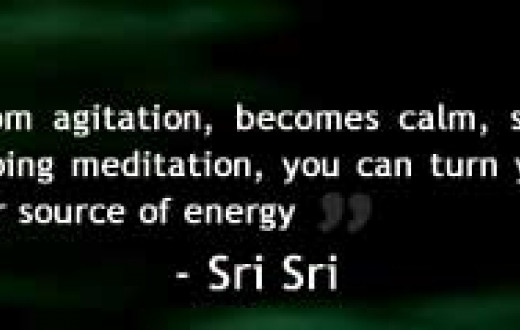Healthy and strong eyes begin with a simple understanding of how the eye works, and best practices. Our lifestyle choices play a great role here.
Presenting the third of a three-part series that will help to start the journey of healthy and strong eyes. Dr. Padmalochan shares insightful tips, debunks many myths and helps us understand the functioning of our eyes. As the chief eye doctor of Sri Sri Netra Jyoti, Dr. Padmalochan has an impressive body of work for the past 11 years.
Q: Lots of people nowadays are wearing sunglasses. Is it good for eyes & how important is sunlight for our eyes?
Dr. Padmalochan: Have you noticed that in very dim light, you can identify objects but not colors? Let’s understand a few things first. There are two types of cells in our retina: rod cells and cone cells. Rod cells work in dim light while cone cells work in bright light. If rod cells deteriorate, one is unable to see at night. This is known as night blindness. Some people are unable to see different types of colors; this is due to the deterioration of cone cells.
We can activate these cells by doing the sunning exercise. In our ancient time, we used to offer water to the morning sun or practice the Surya Namaskar in front of the sun.
In one research, a fish was kept in the dark room without a pinch of light. The fish was given nutrition supplements. However, after a year, it was found that the fish became transparent and blind.
So yes, to answer your question. Sunlight is very important for us.
I know many people are addicted to the sunglass. However, it's not good for the eyes. When we wear sunglasses, the pupil does not contract. It dilates.
This is because the pupil dilates in dim light and contracts in the light. When the pupil does not dilate properly, it could cause glaucoma.
Also, colored sunglasses affect the cone cells.
A lot of advertisements promote the fact that UV rays are harmful to the eye. There’s nothing true in that. A lot of farmers work in fields; nothing happens to them. Yes, in some places like Sydney, the UV protection layer in the atmosphere is depleting. The intensity of UV rays is much higher, and sometimes UV proactive glasses are used. Such glasses are different. Sunglasses do not protect against UV rays.
You can use sunglasses in the snow or when at sea. The reflection is high at such places. Sometimes, in summer, you can use sunglasses too. However, it’s best not to get addicted to sunglasses.
Say yes to a healthy life
Q. Could you tell us something about LASIK surgery? A lot of people are opting for LASIK surgery these days.
Dr. Padmalochan: Yes, many people are doing lasik surgery. Before surgery, the cornea is very circular, but after surgery, the cornea is cut with rays. The cornea cannot be regenerated. Every cell of the body - muscle cells, heart cells, liver cells - can be regenerated - but not the knob cells of the cornea. It’s permanent damage to the cornea.
Lot of people, who’ve done the surgery are fine for the first two-three years. Then they face a lot of dryness in the eyes. Also, many doctors say they don’t know the long-term impact - what happens after 10-20 years? Or in old age?
Some countries have stopped issuing licenses for this surgery. Clarity levels have come down, as well as contrast levels.
I think it’s a risky surgery. It’s better to bring your number down naturally.
Q: Is there any Ayurvedic treatment for a cataract?
Dr. Padmalochan: Yes. Let’s understand a cataract, first. There is a lens in our eyes which is a convex type of lens. But it's not a glass lens like a camera. There is a transparent membrane which has a jelly-like fluid.Think of a raw egg. It has a yellow fluid and a transparent part. If you boil the egg, the transparent jelly becomes white. Similarly, the transparent part of the lens of our eye becomes white due to lack of oxygen. The cataract surgery replaced the white part with an artificial lens.
The artificial lens will create its problems. Our natural eye lens is contractile - it becomes thin when we look afar and becomes thick when we look close. The artificial lens cannot do this - either a sense of distant viewing / close viewing is given. Or one different lens for each eye.
Usually, retinal problems begin after four to five years after the operation. Cataract problems are common in people post 60 years. I would recommend you don’t go for an operation until your vision is completely blurred. You can opt-in for Ayurvedic treatments at the initial stages of cataract formation. We have seen very good results.
Sri Sri Netra Jyoti is a unique research center that combines modern diagnosis of eyesight, ancient pulse diagnosis and specialized Ayurvedic medicine and herbal therapy.




































